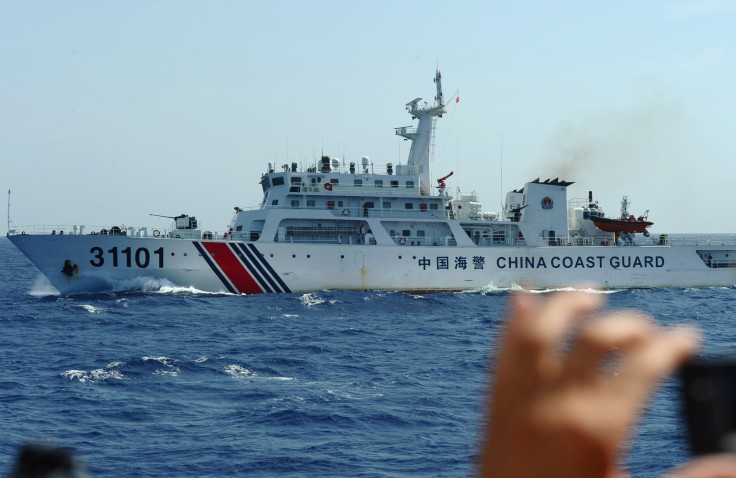Not Using COVID-19 As Cover To Advance South China Sea Claims, Says China
KEY POINTS
- China has constantly ignored international rulings and engaged in aggressive actions in the South China sea and other Asian waters involving Malaysia and Indonesia
- Is China using the COVID-19 pandemic as an excuse to assert its dominance in the South China Sea?
- The country's foreign minister Wang Yi dismissed such claims
China’s activities in the South China Sea and other Asian waters are well documented. They have ignored international rulings, rammed fishing boats in Philippine and Vietnamese exclusive economic zones, and engaged in other aggressive actions involving Malaysia and Indonesia.
A question that remains is if they are using the COVID-19 pandemic as an excuse to assert their dominance in the South China Sea?
According to China’s foreign minister, Wang Yi, the answer is “no”. He said at a press conference Sunday, "There is nothing to support the claim that China is using COVID-19 to expand its presence in the South China Sea.” Wang added the ships and planes carrying medical supplies were sailing through and flying over the South China Sea even as he spoke, The Straits Times reported.
However, the United States and other observers have a different opinion. U.S. Secretary of State Mike Pompeo warned the Association of Southeast Asian Nations (ASEAN) foreign ministers last month China had moved to "take advantage of" the distraction from the pandemic to advance its territorial ambitions in the South China Sea.
Another opinion by some is that China’s recent moves are part of a long-term plan that was formed well before the COVID-19 outbreak first observed in the Chinese city of Wuhan.
China’s past behavior supported the long-term plan with little or no connection to the pandemic. Last month, after the pandemic’s epicenter had moved from China to Europe and the Americas, Chinese Coast Guard (CCG) vessels were accused of sinking a Vietnamese fishing boat near the Paracel Islands, an area that both countries claim sovereignty over. But, in June of 2019, the CCG sank a Philippine fishing boat at Recto Bank (Reed Bank) in the West Philippine Sea, several months before the coronavirus emerged.
The pandemic timing may have favored China to make a move while the U.S. military was distracted but the larger issue is what the Asian country hopes to gain with any long-term plan.
China’s People’s Liberation Army (PLA) began a landing drill off the coast of Hainan on May 15 that some thought was a simulation of a planned takeover of the Pratas Islands, controlled by Taiwan.
Chi Le-yi, a military observer based in Taipei, said China’s plans go beyond Taiwan. He said, “The landing exercise is part of the PLA navy’s regular training to achieve Beijing’s plan to bring the South China Sea under its control. A landing drill could be seen as preparation for an attack on Taiwan, but it is more to do with the PLA building up its combat systems for any possible conflict in the South China Sea.”
Other ASEAN nations face a perplexing problem with China’s activities in the South China Sea that go beyond the unease that has developed in the region. Dr. William Choong, a senior fellow at the ISEAS-Yusof Ishak Institute, said, “China can say what it wants about the situation being stable, but there’s concern that while China may call it business as usual in the South China Sea, it’s coming at the expense of regional countries especially other disputant states.”
Choong also addressed the choice the ASEAN countries face. They can resist as best they can and hope the U.S. will provide the needed balance of power or accept the economic help that China offers now and face being manipulated and controlled by the Chinese Communist country at a later date.
“It’s complicated. For smaller ASEAN countries, geo-strategic and geo-political considerations are important, but in the end, there are a lot of domestic imperatives to attend to, and China can help with those. And that’s how China manipulates these smaller countries.”

© Copyright IBTimes 2024. All rights reserved.





















